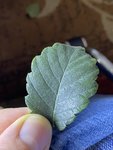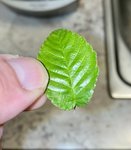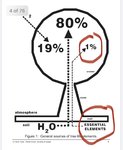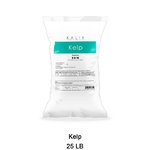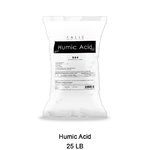So the only way to know for sure, is to put a microscope to it...?
Close, but microscopically it can be very hard to identify fungi. You'd need spores, fruiting bodies, references (which are hard to find) and you might encounter an unknown or undocumented species. Some organisms require chemical dyes to become visible, even under a microscope. It can be done, sure, but it's a tedious process. The only way to be absolutely sure is to do a genetic analysis. I know a couple of researchers that process Environmental DNA, they collect water from rivers and bodies of water - which contain huge amounts of DNA traces - and identify species by specie-specific markers found in the cytochrome oxidase I gene. For most fungi, ITS was used to recognize them in the process of
https://en.wikipedia.org/wiki/Fungal_DNA_barcoding. But I read that they also use the COI gene to do it.
Let's use children's books as an example because I think it sounds more complicated than it is. In layman's terms (if I'm using that phrasing correctly) the barcoding works because all organisms from a certain family tree contain the same genetic starting- en ending code (Start: Once upon a time.. End:..They lived happily ever after.). After that starting code, and behind the end code, there is a sequence of letters that differs between species and subspecies (the actual story itself, prince or princess, you name it). The whole process relies on knowing which species and subspecies contain which variations, so there's a need for a library of known species and their known variations (the library with all books and all text indexed). So the environmental sample is sequenced, generating some kind of book. Then you can check which book it is by comparing texts you found, to known books in the library.
When I talk about a red hood, you know which story I mean. When I talk about a goose with golden eggs, you also know.
The process is so precise, that researchers taking samples a few miles off the coast, can detect pig DNA from the foodstuff that seagulls stole from the dumpsters. I know of one case where they found turkey DNA on the high sea. One of the sailors didn't finish his sandwich..
More than half of symbiotic fungi aren't known to science yet. But the most common ones are probably described in literature and could be identified physiologically. It really helps knowing which species form a relation with certain types of trees, this narrows the search a whole lot.
With a microscope you could check connections to the plant tissue, but this poses some other challenges; is the fungus feeding off of dead tissue, or is it actively exchanging nutrients with live roots? Is it a pathogen that has entered the root system, or is it a symbiont that's at peace? I don't know enough about fungal-plant relationships to know how to distinguish this. I do know that some symbionts can become hostile and turn into pathogens depending on environmental influences. Microscopically, they would look the same.
This makes microscopy a nice but inaccurate tool. Still, a cheap USB microscope can be a great deal of fun to play with. They can be pretty cheap too!



